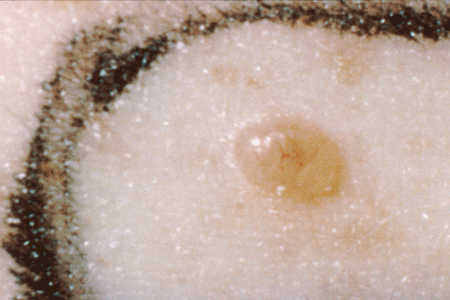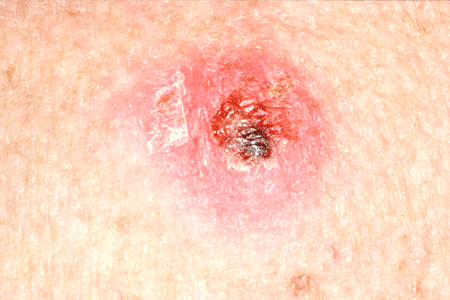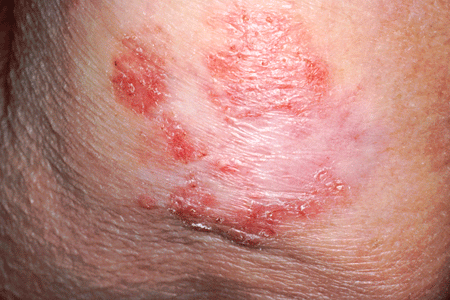|
Symptoms
Most basal cell and squamous cell skin cancers can be cured if found and treated early.
A change on the skin is the most common sign of skin cancer. This may be a new growth, a sore that doesn't heal, or a change in an old growth. Not all skin cancers look the same. Skin changes to watch for:

- Small, smooth, shiny, pale, or waxy lump

- Firm, red lump

- Sore or lump that bleeds or develops a crust or a scab

- Flat red spot that is rough, dry, or scaly and may become itchy or tender

- Red or brown patch that is rough and scaly
Sometimes skin cancer is painful, but usually it is not.
Checking your skin for new growths or other changes is a good idea. A guide for checking your skin is below. Keep in mind that changes are not a sure sign of skin cancer. Still, you should report any changes to your health care provider right away. You may need to see a
dermatologist, a doctor who has special training in the diagnosis and treatment of skin problems.
< Previous Section | Next Section > |